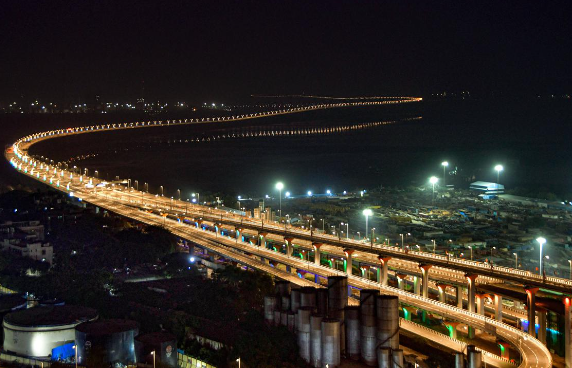The Atal Bihari Vajpayee Sewari - Nhava Sheva Atal Setu ' :
Built at a cost of about Rs. 18000 crore, the 'Atal Setu' is India's longest sea bridge
It is a 21.8 Km long six lane bridge having 16.5 km length over the sea and about 5.5 km on land
The bridge's foundation was laid in December 2016, and construction began April 2018.
The bridge starts from sewri in Mumbai and ends at Nhava Sheva in Iran taluka in raigad district
it will shorten the distance between Mumbai and Navi Mumbai to just 20 minutes which took 2 hours earlier
The Atal Setu" is one of the longest sea bridges in the world
The construction of this bridge involved work on three terrains, including an elevated bridge on land, a bridge on the sea, and on mudflats.
To build the bridge, new technologies were used for the first time in India.
These technologies include include orthotropic steel decks, which provide additional distance between two piers, and Reverse Circulation rigs that reduce sound and vibrations.
This technology helped to minimize damage to marine and aquatic life, as well as flora and fauna."
This bridge is built with reinforced steel that weighs as much as 17 Eiffel Towers.
The structural steel used in this bridge is four times heavier than that used in Howrah Bridge.
Additionally, the amount of concrete used in the bridge is six times more than that used in the statue of liberty.
Lastly, the wiring used in the bridge has a diameter twice as large as that of the earth.
70,000 vehicles are expected to use the bridge every day
MTHL's speed limit for cars is 100 kmph and bikes, autorickshaws, and tractors not allowed
One - way toll for a passenger car is Rs. 250. charges for return journeys and frequent travelers will vary
Sea bridge to use open road tolling system for vehicles to pay tolls without stopping
The lighting poles on the bridge can withstand high- velocity winds during monsoons
The bridge has a lightning Protection System to prevent damage from lightning





